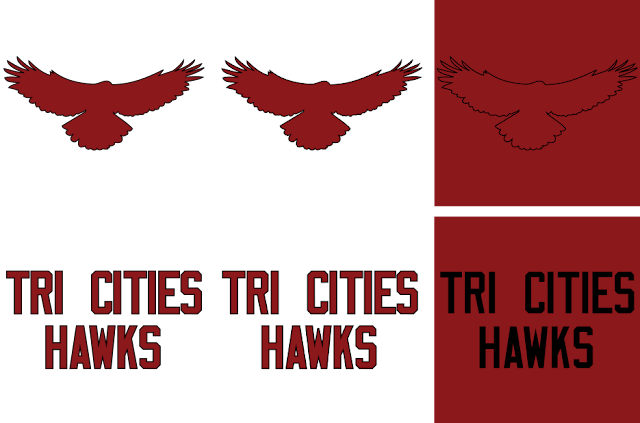1950 AFL Offseason Meetings
Following a successful first season for the AFL, the owners of the 6 teams met together in late February to conduct their first official meetings to kick off the 1951 season. Donovan Hasenkamp addressed the media after the meeting concluded.
COLUMBUS IN DIRE STRAITS
As if having a poor season wasn’t the worst of the Buckeyes’ worries, the University of Ohio, where the Buckeyes play their home games, were looking to opt out of their agreement with Columbus if they couldn’t turn a profit this year. Buckeye Stadium has been notoriously empty, and owner Randolf Durant has been growing disinterested in the team over the past few seasons. Hasenkamp assured that the Buckeyes would remain in the league until then, and would look at other options to avoid the team folding if that was the option. For now, UOhio’s contract with the Buckeyes lasts until the 1954 season, and if the Buckeyes don’t significantly increase attendance numbers by next season, the university may look into terminating the contract earlier. Hosting the Buckeyes has been a huge financial loss for UOhio, who are able to pull in crowds of 50,000 or more during college football games, while the Buckeyes could barely manage to get 10,000 in attendance. For comparison, nearly every other team in the 1950 season averaged above 20,000 fans, even with Tri-Cities’ LeClaire Field only having a capacity of around 21,000. Hasenkamp assured that the league would provide financial support to the Buckeyes to help them remain in Columbus, but was unsure how long this standoff would last. If there was something to happen to the Buckeyes, the league would swiftly look into any scenario to prevent them from folding.
AFL TO EXPAND TO 8 IN 1952
The next surprising announcement was that the AFL was already looking into expanding past the original 6 teams. The league had already been looking into expansion locations throughout the first season, and it seems like it’s just a matter of time as to when the league will expand and how many teams they’ll expand to. They have two main options on how to expand, the first was to expand into markets that had stadium options already present and weren’t already taken by the other regional leagues. This didn’t leave the AFL with many options, but there were three frontrunners: Kansas City, MO, Louisville, KY, and Washington, D.C.. Each of these cities had a stadium available for now, as Kansas City and Washington both have baseball stadiums that have hosted semi-pro football teams in the past, and Louisville has Louisville State’s football field to play on if needed. If the league was to expand via this route, Kansas City and Washington would be the frontrunners, as they provided the strongest bids and had owners who were willing to spend to make their teams successful.
Discussion on which cities would be awarded teams were quickly put on the backburner when Hasenkamp shifted to a more excited tone after explaining the Columbus fiasco that was rapidly unfolding. The AFL was to expand to 8 teams in 1952, but the two teams weren’t from any of the expansion cities that were being tossed around. Instead, Hasenkamp would welcome the Buffalo Hammers and the Pittsburgh Shamrocks from the NYPL into the AFL, who were leaving the NYPL after the end of the 1951 season. Many expected them to become independent teams, and two very established teams joining the fledgling league is a surprise to all. Hasenkamp stated that he originally wanted to expand to cities that weren’t in any league at the moment, but when he was presented with the option to add Buffalo and Pittsburgh into the league, he didn’t hesitate reaching out to both teams and offering them a spot in the AFL. The league didn’t say anything on future expansion, whether or not they would acquire existing clubs like they did with this expansion or go through the more traditional approach with expansion cities. However they do decide to expand, adding Buffalo and Pittsburgh should provide a great boon to this growing league.
INTRODUCTION OF THE DRAFT
After years of Donovan Hasenkamp lobbying the MWFC to introduce a common draft to help level the playing field instead of paying for the best players out of college, he finally gets his wish. He announced that the first draft would be held sometime in 1952 behind closed doors, and the draft order would be the inverse of the previous year’s standings. For example, if the draft were to occur this season, then the Columbus Buckeyes would get the first overall pick, followed by Cleveland, and it would continue until Tri-Cities makes their pick. Hasenkamp said he had been working with some of the league’s best scouts to gather talent for the draft, and hopes to bring players from across the nation to the league, not just from east of the Mississippi. Because of the other leagues potentially poaching talent away from the AFL, Hasenkamp announced that all future players must specifically declare for the AFL, and that all players who do so would get paid significantly higher than the other leagues. The league originally wanted the first draft to occur before the 1951 season, but they pushed it back a year to allow for players, scouts, and teams to properly prepare. Hasenkamp also mentioned that scouts would now be able to send in scouting reports of players for the league to analyze and accept players to be eligible for the draft.


Comments
Post a Comment